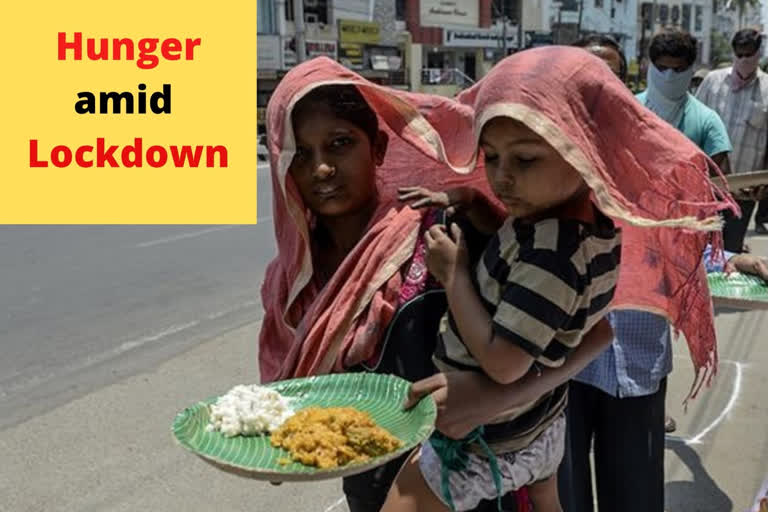Hyderabad: The Minister of Consumer Affairs, Food and Public Distribution has gone on record saying that the country has food grains stocks of the order of 53 million tonnes, of which rice is about 30 million, and the rest is wheat.
It may be added that this is far in excess of the buffer stock norms we need to maintain, of 7.6 million tonnes of rice and 13.8 million tonnes of wheat or a total of a little above 21 million tonnes of food grains.
What we do not readily acknowledge, however, is that at the same time the number of people who are going hungry in India is about 200 million or 20 crores, reflected in these huge stocks. This is the chronic food security story of India repeating itself.
What should be with the poor households in the warehouses? And now a huge Rabi harvest is waiting to be gathered and stored.
As per the estimates for 2019-20, total foodgrains production in the country would be a record 292 million tonnes, which is higher by 6.74 million tonnes than the production of food grains in the year gone by.
Now, we have hunger and COVID-19, simultaneously. A deadly combination, especially for the migrant poor. Still, we can feed all our people, if only we organize our people and our public services properly, including by protecting them fully against COVID- 19.
The key for this would be the Public Distribution System (PDS) and the Integrated Child Development Services (ICDS) that we have built, and the Personnel we have recruited and trained, over a period of 40 years in these services.
The ICDS personnel are in every village of this country. The size of the ICDS personnel at around 1.7 million is perhaps larger than the combined strength of our armed forces. They are verily social warriors.
At a time when the nation is locked down in the face of a marauding COVID-19 crisis, its impact on our migrant population mainly in the unorganised sector is an existential crisis.
The logic of the COVID-19 combat is that it restricts movement as the first step of its resolution. However, the essence of the Indian unorganised sector’s existence or its very survival is dependent on internal migration, interstate and intrastate, calling for movement.
The logic of unorganised sector migration is hunger. This conundrum is no easy problem to solve. So, we have to find solutions reconciling this two illogical logic.
Read:Rahul Gandhi says 'lockdown' not the solution for coronavirus crisis
Hunger is the supreme ruler in this situation. And so, it appears that COVID-19 with no vaccine on the horizon, how can we help ourselves in this crisis?
Naturally, the Prime Minister is in the thick of this crisis as the leader. He should consider mobilising the PDS and ICDS personnel and infrastructure, alongside the Medical and Health human resources, as the first line warriors in this battle.
Fundamental to this strategy will be facilitating measures of controlled movement of personnel and road transport in terms of logistics, encouraging the spirit of true federalism between the Union and the States.
The institutions involved are the Union’s FCI, RBI for central pool food grains supplies and adequate credit supply; and the States’ agencies for transportation and distribution at the village level.
This will depend upon how rationally and maturely the decisions to allow movement of our migrant population in the coming days that our union and federal leaders would take together, based on advice from the ICMR, virologic and other health experts.
It is a very delicate balance. Like we did in the past to determine the prevalence of distress in drought/ famine conditions by opening “test public works”. We should now open free kitchens in all self- selecting areas like urban bastisof the poor and the settlements of the poor in villages and carry out a quick inquiry of where the migrants and the hungry elsewhere are. That will show us the exacerbated hunger geography levels in the country at this hour. That will also be a pro-active way of feeding the poor by offering them hope of food and solidarity.
The hungry are bound to be everywhere and therefore this feeding should be done everywhere. Start in bastis in all urban areas; and start in all rural areas from dry land agricultural areas, upland areas, tribal areas, drought-prone and desert areas. This way, we can cover almost all the hungry people of India, who are nearly 20 crores.
The Anganwadi centres and Anganwadi Workers, with extended working hours, would be the ideal starters to begin this massive counteraction. They have a place to call as their own, however rudimentary, and known to every villager and bastidweller of the country.
We have to guarantee them all required protection in every possible manner, including enhanced remuneration and a variety of protective equipment and medical supplies and trained to practise social distancing. And family insurance for each of them.
